Dec 23, 2025
Dec 23, 2025
India - The land of diversity and culture, has to its credit a combination of civilization and a wealth of heritage, a youth that is going towards westernization and an older generation that reminds them of their cultural inheritance.
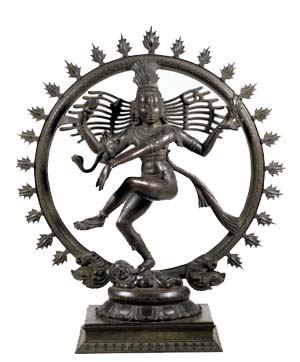 India is the place where there is a wide variety of people, religions, states, dialects and cuisine. Despite the diversity in thoughts, lifestyles and upbringing in the country, one common thread that binds the nation together is its Fine Arts such as painting, music and one of the most popular forms that is known the world over - Indian Classical Dance.
India is the place where there is a wide variety of people, religions, states, dialects and cuisine. Despite the diversity in thoughts, lifestyles and upbringing in the country, one common thread that binds the nation together is its Fine Arts such as painting, music and one of the most popular forms that is known the world over - Indian Classical Dance.
The mention of the word dance conjures up images of Nataraja (Lord of dance) through which the Indian God Shiva is portrayed. All the Indian classical dance styles are derived from the Natyasastra. Indian Classical Dances have their roots in Hinduism - the oldest and the most widely practiced religion in the country even today.
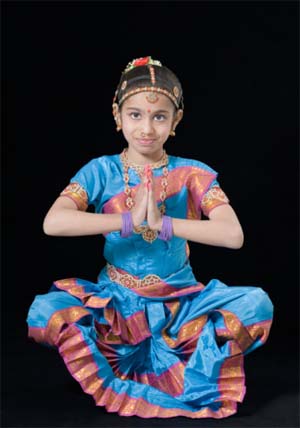 There are six main forms of classical dance in India namely Bharatnatyam, Kathak, Kathakali, Manipuri, Mohiniattam and Kuchipudi.
There are six main forms of classical dance in India namely Bharatnatyam, Kathak, Kathakali, Manipuri, Mohiniattam and Kuchipudi.
Bharatanatyam
Tamil Nadu's own unique performing art is believed to be India's oldest form of classical dance. In Bharatanatyam, the dancer is a devotee who has been separated from her object of devotion (God). In her yearning for him, she expresses all the emotions of a tragic heroine yearning for her lover. Bharatanatyam is performed commonly by women in a solo performance. Performers require at least seven years of dedicated training to become proficient in the gestures and poses of the dance.
The three main components of the dance which also make up its name are Bha - Bhav or emotion, Ra - Rag or melody and Ta - Tal or rhythm.
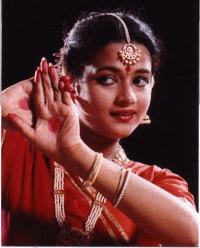 Kathak
Kathak
Kathak is the world famous north Indian dance form. Kathak literally means to tell a story (Katha). Traditionally the stories were of adha and Krishna but the dance was taken to Muslim courts during the Mogul invasion and thus became more entertaining and less religious in content. More emphasis was laid on the pure dance aspect than on the expression and emotion.
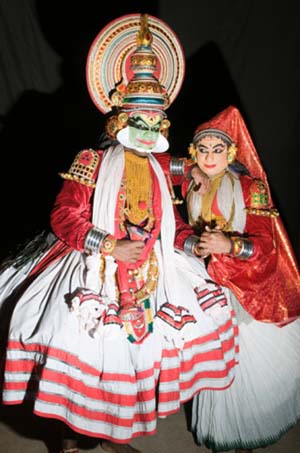
Kathakali
Kerala's colorful and theatrical dance form has more than a hundred different arrangements of plays, all of them based on stories of the Ramayana and the Mahabharata.
Only men can become Kathakali dancers and their make-up is striking with the use of bold colors to paint the faces and expressions.
Characters portraying noble, divine, heroic, wicked, evil, demonic, wild, primitive, pure, humble and spiritual qualities are differentiated by the spectacular make-up.
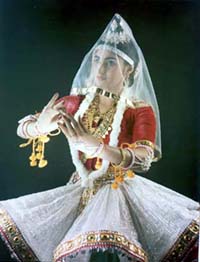
Manipuri
Manipuri dance was traditionally called jogai, which means circular movement. In ancient texts it has been compared to the movement of the planets around the sun. This dance has a very fluid style with smooth movements. The dancers wear beautiful costumes and there is always a dancer who plays the part of Krishna. The music is indigenous and uses various instruments.
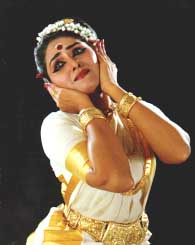 Mohiniattam
Mohiniattam
Mohiniattam from Kerala is perhaps one of the most graceful dances that exclusively identifies the green environment of the state with its gentle movements like swaying of palm trees and calm ocean waters. The word Mohini means a maiden who charms the onlooker and attam means dance. This dance is performed only by women.
Kuchipudi
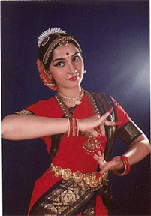 From Andhra Pradesh this dance drama still exists today and can most closely be associated with the Sanskrit theatrical tradition. The actors sing and dance, and the style is a blend of folk and classical that provides greater freedom of movement that other classical dance forms.
From Andhra Pradesh this dance drama still exists today and can most closely be associated with the Sanskrit theatrical tradition. The actors sing and dance, and the style is a blend of folk and classical that provides greater freedom of movement that other classical dance forms.
One integral part of all classical dances in India is Abhinaya or the art of expressions. Abhinaya consists of four parts namelyAngika or physical movements of every part of the body to convey a meaning,Vachikabhinaya or vocals used formally by the members of the orchestra or the non-dancing cast, Aharyabhinaya or external moods conveyed by the costume, make-up, sets and accessories and Satvikabhinaya or psychological feelings portrayed by the eyes and the entire being of the performer who feels the mood, the character and the emotion that flows from the natural self.
In addition, the Nav-Rasas, or nine emotions, give all dances a completeness that allows the dancer and the audience to experience the full beauty and meaning of the lyrics and the movements that portray them. These emotions of happiness, anger, disgust, fear, sorrow, courage, compassion, wonder and serenity are expressed in the eyes, the face, the subtle muscle shifts and the in the body as a whole.
Indian Classical Dance is a remarkable world of expressions that takes the dancer and the audience in its own realm. It is a reality, that only the dancer and the audiences know. Here is a realm where boundaries, walls, floor and ceiling cease to exist, leaving only space, time and music to remain.
|
The tya Karma |
||
|
Khantaanyat Lambayat Geetam |
Keep the song in your throat |
|
10-Mar-2001
More by : Bijal Dwivedi Mehta